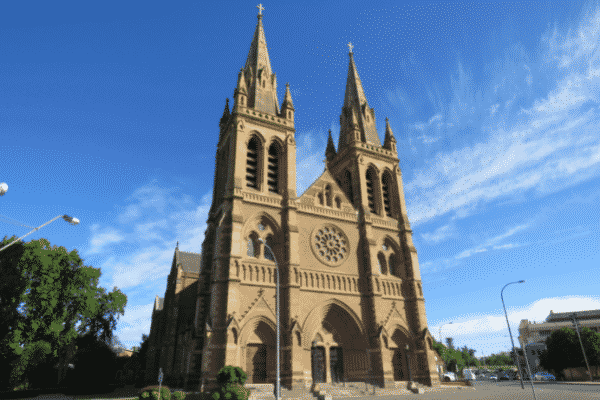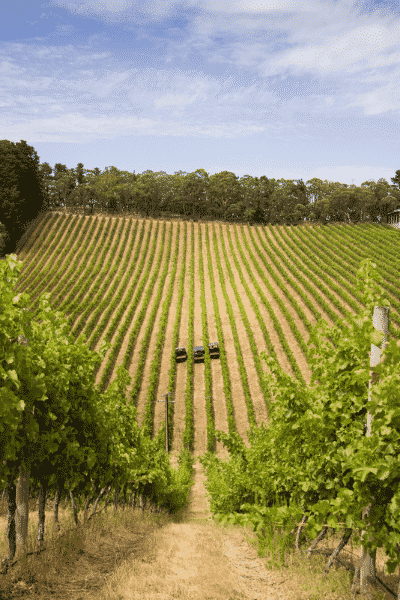If you could live anywhere in the world, where would it be? According to the Economist magazine’s annual Global Liveability Index, of the world’s most liveable cities, Australia’s punch way above their weight. Melbourne, Brisbane, Perth and Sydney jostle to reach the top ten, though this year, Adelaide overtook them all, coming in at number three.
Planned by South Australia’s first Surveyor-General, Colonel William Light in 1837, Adelaide is ideal for discovering on foot, with broad tree-lined streets arranged in an easy-to-follow grid pattern, with garden squares and expansive parklands surrounding it. Streets are lined with grand historic buildings, majestic churches and shops with broad awnings and decorative iron lace balconies, while the River Torrens that runs through the city adds to its appeal.
I’ve visited Adelaide many times, and whenever I return it’s with a sense of finding myself in familiar surroundings, the streetscape reassuringly the same. Missing the clanking trams, heritage architecture and great dining and bar scene, I recently spent several days there sightseeing. Here is a guide on what you can see and do.
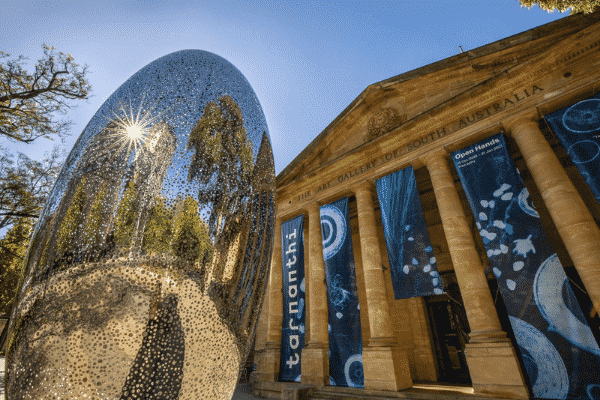
City of Museums
North Terrace is Adelaide’s cultural precinct where you’ll find several outstanding museums. The South Australian Museum is home to the Aboriginal Cultures Gallery, with more than 3000 artefacts from stone tools to woven fishing nets, the most significant collection of its type in the world. The Art Gallery of South Australia in one of Adelaide’s most beautiful historic buildings, showcasing art from the colonial era to contemporary works. The Migration Museum provides personal stories from migrants to Australia, while the State Library has a collection of memorabilia donated by Sir Donald Bradman, Australia’s most famous cricketer.
READ ALSO: Nature’s playground: Discovering Port Stephens

Gardens
Continue along North Terrace to the Adelaide Botanic Gardens, founded in 1855, with Victorian era glasshouses, fountains, subtropical and Mediterranean plant displays, and a conservatory featuring 4000 plants.
From here loop back along the meandering pathway that follows the River Torrens towards the Adelaide Arts Centre and Elder Park. The distinctive and often photographed octagonal Rotunda was built in 1882. You’ll pass by ducks wading, rowers at full speed, and the vintage Popeye cruiser that offers short cruises.
Nearby the Adelaide Oval, steeped in cricketing history, has been a feature of the city since it was built in 1871. Now redeveloped, the Oval has been transformed into a modern state of the art stadium. The city skyline has also begun to get a serious bump, with several new skyscrapers, while the Arts
Centre precinct near Adelaide Oval has expanded to resemble Melbourne’s Southbank.
Grand buildings
Also on North Terrace are the former Railway Station, Government House, Parliament House and Ayers House, the home of a former Premier, Sir Henry Ayers. From here you can proceed along Adelaide’s main thoroughfare, King William Street, towards Victoria Square, where you’ll find grand civic buildings built from sandstone and bluestone, including the Town Hall, Supreme Court, and former Treasury and General Post Office.
READ ALSO: Darwin and Kakadu: Discovering Australia’s ‘Top End’
Shopping
The main shopping precinct is Rundle Mall. On the corner of Rundle Mall and King William Street is the distinctive neo-Gothic Beehive Building, home to Haigh’s Chocolates, the oldest family-owned chocolate manufacturer in Australia. The Adelaide Arcade completed in 1885, was the first retail establishment in Australia to have an electric light. Now beautifully restored to its original condition, with decorative features including tessellated tiles and cast iron, it has more than 100 specialty shops selling hats, comics, buttons and pearls. Wander down the many small streets and cobbled laneways that lead off Rundle Mall or that are close by, to discover designer boutiques, my favourite being Union Street.
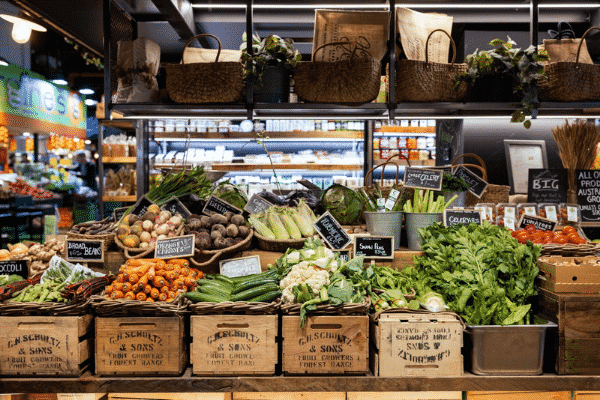
Markets, bars and dining
The back streets of Peel and Leigh, tucked between Hindley and Currie Streets, is the heartland of the city’s thriving small bar and dining scene, with the East End’s Ebenezer Place another area to discover, a nod to Melbourne’s laneways and bar scene.
For dining, Asian restaurants are popular, especially Japanese and Korean, with other cuisines on offer, from Vegan Zenhouse to Parwana Afghan Kitchen. You can also find European cuisine, a long-standing favourite Lucia’s at the Central Market, a go to destination for fresh fruit and gourmet specialities.
Multicultural influences
The Adelaide plains were the traditional lands of the indigenous Kaurna people. After South Australia was declared a British colony in 1836, British settlers arrived, displacing the Kaurna, whose numbers were decimated by loss of their land and disease. German settlers also came, as well as migrants who came later on from Mediterranean countries and Asia. Today Adelaide is a multicultural city.
While most historic landmarks reflect the British colonial heritage, on Little Gilbert Street a mosque was built in 1889, financed by Afghan cameleers. 181 Sturt Street is the former shop of Mahomet Allum from Kandahar, a camel driver, trader and renowned herbalist. Several hundred Afghan cameleers came to Adelaide to transport supplies and produce that were essential in opening up our vast desert interior.
Nearby attractions
With its boutiques, restaurants and tree-lined streets that showcase the suburb’s many cottages and grand mansions, North Adelaide is well worth a visit.
Many other places of interest are also just a short drive away. Glenelg Beach is well known, but locals in the know head to beaches including Henley, Brighten and Moseley.
If you enjoy farm-to-plate dining and fine wine, there are many areas to explore. The Adelaide Hills has 60 wineries, including Penfolds Magill Estate, and excellent places to dine. Enjoy spectacular views of Adelaide from Mt Lofty and visit the beautiful botanical garden.
The quaint settlement of Hahndorf is the oldest German settlement in Australia where you can sample delicacies such as pretzels and sausage wurst, or buy locally handcrafted items. The Beerenberg Strawberry Farm and the former home and studio of the artist Sir Hans Heysen are also found here.
The Barossa Valley, an hour’s drive north of Adelaide, is the heart of Australia’s wine industry, with a picturesque landscape of rolling hills and valleys, historic quaint villages including Stirling and Aldgate, artisan food producers, and more than 150 wineries many with cellar doors.
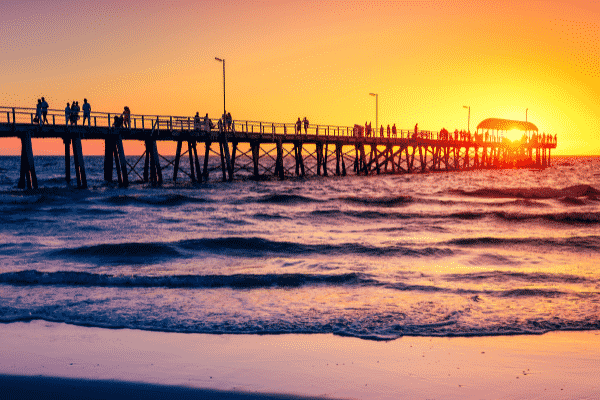
Drive south of Adelaide for 45 minutes to reach the rolling hills of McLaren Vale, nestled between the mountains and the sea. Visit a clutch of esteemed wineries including Haselgrove, d’Arenberg and Primo Estate. There’s also great food with artisanal bakeries, cafes, chocolate and cheese makers and the weekly Willunga Farmer’s market.
There are also some great hikes nearby including the Heyson Trail, and for native wildlife, head for the Cleland Conservation
Park or Warrawong Sanctuary where native animals are largely free to roam in a bushland setting.
Adelaide is also your starting point if heading to the Flinders Ranges, with my stay at Rawnsley Park Station one of my best ever trips, and Kangaroo Island, which is where I’m headed hopefully sometime soon.
Travel Notes
- Fly there with Qantas, Jetstar or Virgin Australia, catch a train (Overland, Great Southern, Indian Pacific or Ghan), or drive. The best way to sightsee is by car, though Adelaide has an excellent public transport network with the J1/J2 airport buses a bargain.
- Upscale accommodation choices include the Crowne Plaza, Mayfair, Playford, Hilton and Sofitel, while the Ibis and Grosvenor Hotel are more affordable choices.
- Adelaide hosts major sporting events and festivals throughout the year when accommodation should be booked well in advance.
- Check the latest government travel restrictions before travelling
READ ALSO: Hike your way through Tasmania’s south coast
Link up with us!
Indian Link News website: Save our website as a bookmark
Indian Link E-Newsletter: Subscribe to our weekly e-newsletter
Indian Link Newspaper: Click here to read our e-paper
Indian Link app: Download our app from Apple’s App Store or Google Play and subscribe to the alerts
Facebook: facebook.com/IndianLinkAustralia
Twitter: @indian_link
Instagram: @indianlink
LinkedIn: linkedin.com/IndianLinkMediaGroup






